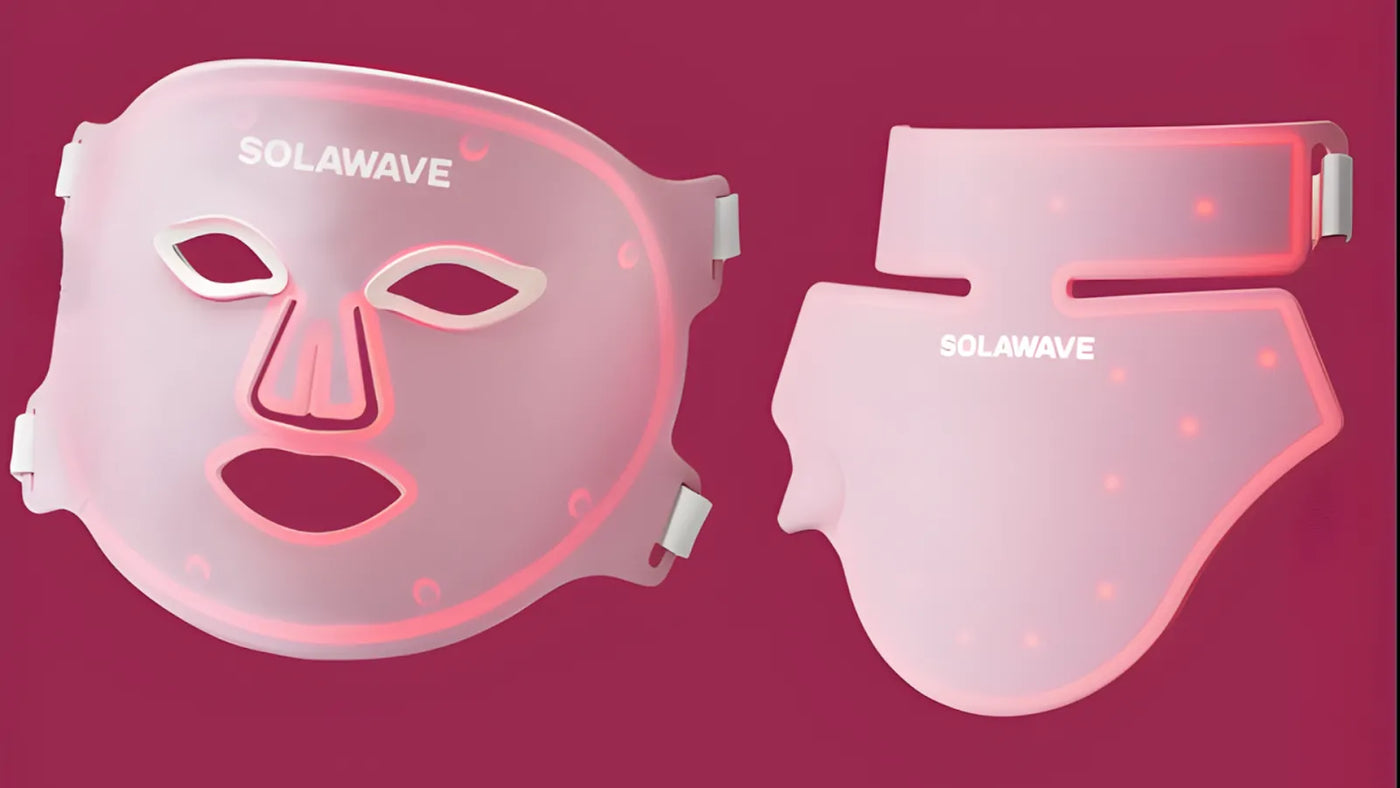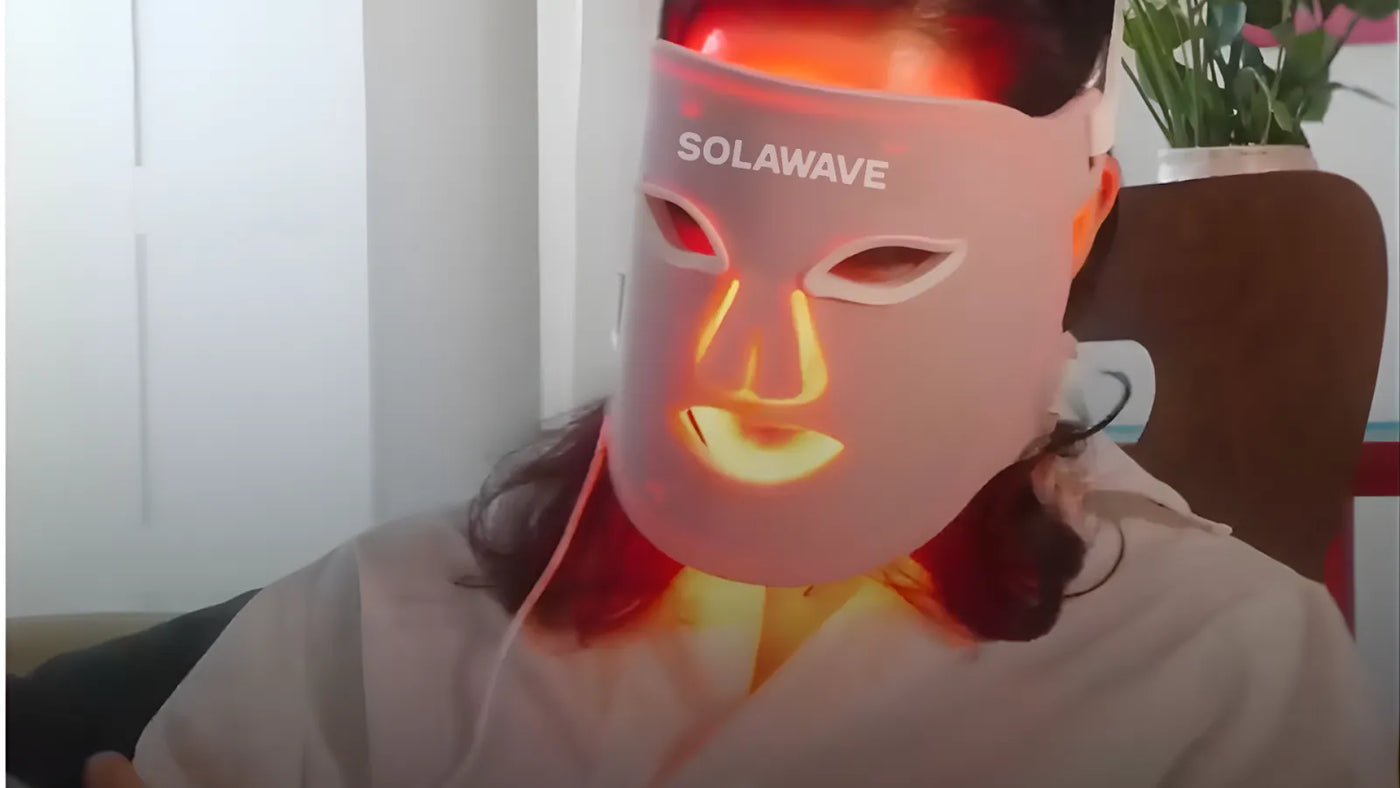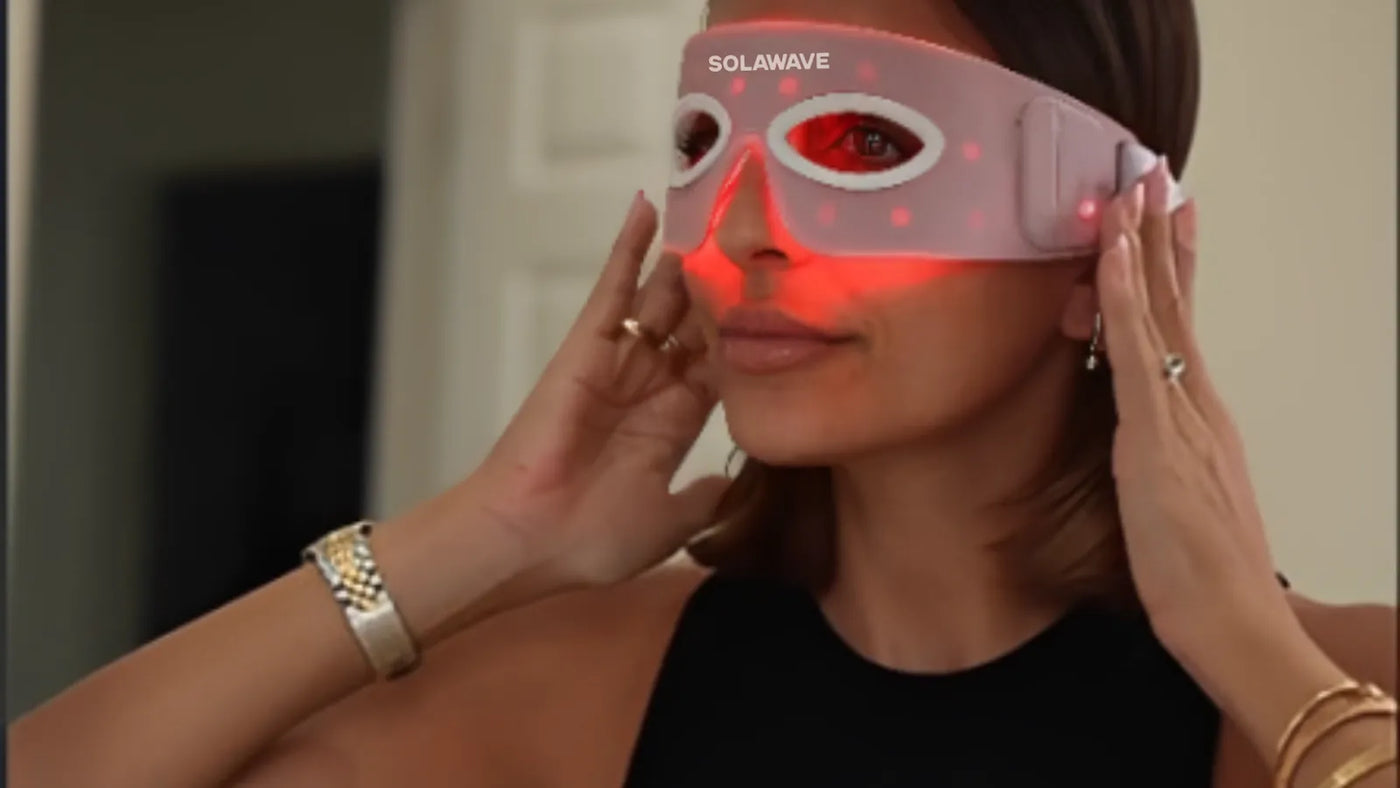

Red Light Therapy for Acne: Your New Best Friend
Whether you’re dealing with occasional breakouts or persistent blemishes, the impact that acne can have on your daily life can be a lot. As people search for effective ways to manage acne and improve their skin’s appearance, light-based therapies have become increasingly popular in the world of skincare.
Red light therapy has emerged as a sought-after wellness trend, especially for those looking to soothe their skin and target signs of skin aging. You might have seen red light therapy devices in spas, dermatology clinics, or even for at-home use. But what exactly can red light therapy do for acne?
It’s important to understand that red light therapy is not a cure or treatment for acne itself. Instead, its main benefit lies in calming the inflammation and redness that often accompany breakouts. If you’re looking to directly target the bacteria that cause acne, blue light therapy is the real powerhouse. Blue light therapy works by destroying acne-causing bacteria and helping to control excess oil production, making it a valuable option for those with mild to moderate acne.
Throughout this article, you’ll discover how light therapy as a whole can support your skin, and why blue light therapy is the go-to choice for tackling acne at its source.
What Is Red Light Therapy?
Red light therapy, also known as photobiomodulation, is a non-invasive skincare technique that uses specific wavelengths of red and near-infrared light to interact with your skin at a cellular level. When this light penetrates the skin, your cells convert it into usable energy, which supports natural biological processes like renewal, repair, and restoration. This process helps your skin function at its best, encouraging a healthier, more radiant appearance over time.
In skincare, red light therapy is commonly used to help reduce the appearance of fine lines and wrinkles, improve skin texture, and promote a firmer, smoother-looking complexion. Many people also turn to red light therapy to calm irritated skin and reduce visible redness and inflammation—making it a popular choice for those dealing with sensitive or acne-prone skin.
Red light therapy devices are widely accessible today, ranging from professional-grade equipment in dermatology clinics to safe, FDA-cleared devices designed for at-home use. These devices use medical-grade LEDs to deliver the precise wavelengths needed for effective results. Most users find the treatment gentle and pain-free, with no downtime or irritation. For best results, consistency is key—using red light therapy at least three times a week can lead to visible improvements in as little as four weeks, with more significant changes typically seen after eight weeks.
Safety is a top priority with red light therapy. FDA-cleared devices in particular are typically lab-tested, dermatologist-approved, and designed to be non-invasive. While most people tolerate red light therapy well, it’s always a good idea to do a patch test before starting regular use, especially if you have sensitive skin.
Overall, red light therapy offers a convenient and accessible way to support your skin’s natural renewal process, helping you achieve a healthier-looking complexion without harsh chemicals or invasive treatments.
How Red Light Therapy Impacts Acne
Acne is often accompanied by inflammation and redness, which can make breakouts look and feel worse. Inflammation is your body’s natural response to irritation or infection, and in the case of acne, it’s what causes those swollen, tender spots that can linger even after the initial breakout has subsided.
Red light therapy is particularly effective at addressing this aspect of acne. When you use red light therapy, the specific wavelengths of light penetrate deep into your skin, where they work to calm inflammation and visibly soothe irritated areas on the surface. Many people find that their skin looks soothed and feels more comfortable after consistent use.
It's also good to understand what red light therapy cannot do for acne. Red light therapy does not kill the bacteria that cause acne, nor does it reduce the production of sebum (the oil that can clog pores and contribute to breakouts). Its primary benefit is in supporting your skin by minimizing the look of inflammation and promoting a calmer, more even-looking complexion.
Scientific studies and expert opinions back up these benefits. Dermatologists and skincare professionals often recommend red light therapy as a supportive step in an acne care routine, especially for those who struggle with persistent redness or post-acne marks.
While red light therapy can be a valuable tool for soothing your skin, it’s not a cure or direct treatment for acne itself. For best results, it’s often used alongside other proven acne-fighting strategies, such as blue light therapy, topical treatments, and a consistent skincare routine. Always consult with a dermatologist to find the best approach for your unique skin needs.
Blue Light Therapy: The Real Acne Fighter
Blue light therapy is a breakthrough approach in the fight against acne, especially for those dealing with mild to moderate breakouts. Unlike red light therapy, which focuses on calming inflammation, blue light therapy goes straight to the source of acne by targeting the bacteria that cause it.
Blue light therapy works by using a specific wavelength of light — typically around 415 nanometers — that penetrates the skin’s surface. This wavelength is absorbed by the bacteria known as Propionibacterium acnes (P. acnes), which are a major contributor to acne development. When blue light is absorbed, it triggers a chemical reaction within the bacteria, producing reactive oxygen species that destroy the bacteria from the inside out. By reducing the population of acne-causing bacteria, blue light therapy helps prevent new breakouts and allows your skin to heal more effectively.
In addition to these effects on bacteria, blue light therapy has been shown to help regulate sebum (oil) production. Excess oil can clog pores and create an environment where bacteria thrive, so keeping oil levels in check is a big part of managing acne. By reducing both bacteria and oil, blue light therapy addresses two of the main factors that contribute to breakouts.
Clinical studies and dermatologist insights support the effectiveness of blue light therapy for acne. Research has shown that consistent use of blue light therapy can lead to a noticeable reduction in both the number and severity of acne lesions. Dermatologists often recommend blue light therapy as a safe, non-invasive option for those who want to avoid harsh chemicals or prescription medications.
It’s important to remember that while blue light therapy can be a powerful tool in your acne-fighting routine, results can vary from person to person. Consistency is key — most users see the best results with regular, daily use over several weeks. And as always, blue light therapy should be seen as a supportive option rather than a standalone cure. For persistent or severe acne, consulting with a dermatologist will help you find the most effective, personalized treatment plan.
Other Proven Treatments for Acne
While light therapies like red and blue light can play a supportive role in your skincare routine, there are several other dermatologist-recommended treatments that have been proven effective for managing acne.
Topical treatments are often the first line of defense against acne. These include products containing ingredients like benzoyl peroxide, salicylic acid, retinoids, and topical antibiotics. Each of these works in a different way — some help unclog pores, others reduce inflammation, and some target bacteria directly. Many over-the-counter and prescription formulas are available, so you can find a solution that fits your skin type and severity of acne.
Oral medications may be recommended for more persistent or severe cases. These can include oral antibiotics to reduce bacteria and inflammation, hormonal treatments such as birth control pills or anti-androgens for those whose acne is linked to hormonal fluctuations, and isotretinoin (commonly known as Accutane) for the most stubborn cases. These treatments are typically prescribed and monitored by a healthcare professional due to their potential side effects and the need for ongoing evaluation.
Lifestyle changes can also make a significant difference in acne management. Maintaining a consistent skincare routine, eating a balanced diet, managing stress, and avoiding picking or squeezing blemishes can all contribute to healthier skin. Simple habits like washing your face twice daily and using non-comedogenic (non-pore-clogging) products can help prevent new breakouts.
If you’re struggling with persistent or severe acne, consult with a healthcare professional or dermatologist. They can help you identify the underlying causes of your acne and develop a personalized treatment plan that addresses your specific needs. With the right combination of treatments and support, you can take control of your skin health and feel more confident every day.
Conclusion
When it comes to managing acne, red light therapy can be a valuable tool for calming inflammation and reducing the redness that often accompanies breakouts, helping your skin look and feel more balanced. However, if your goal is to directly target the bacteria and excess oil that cause acne, blue light therapy is the real powerhouse. These therapies can work together to support your skin’s natural healing process and enhance the results of your overall skincare routine.
Remember, light therapy is not a cure or standalone treatment for acne. It’s best used as a supportive option alongside other proven methods, such as topical treatments, oral medications, and healthy lifestyle habits. For the most effective and personalized approach, always consult with a healthcare professional or dermatologist. They can help you find the right combination of treatments to address your unique skin needs and guide you toward clearer, healthier skin.
Disclaimer: This article is intended for informational purposes only, and should not be interpreted as medical advice or guidance. Always seek medical advice and care from a trusted healthcare professional.
Sources:
-
Effect of Blue Light on Acne Vulgaris: A Systematic Review - PMC
-
A Review of hormone-based therapies to treat adult acne vulgaris in women - PMC





















